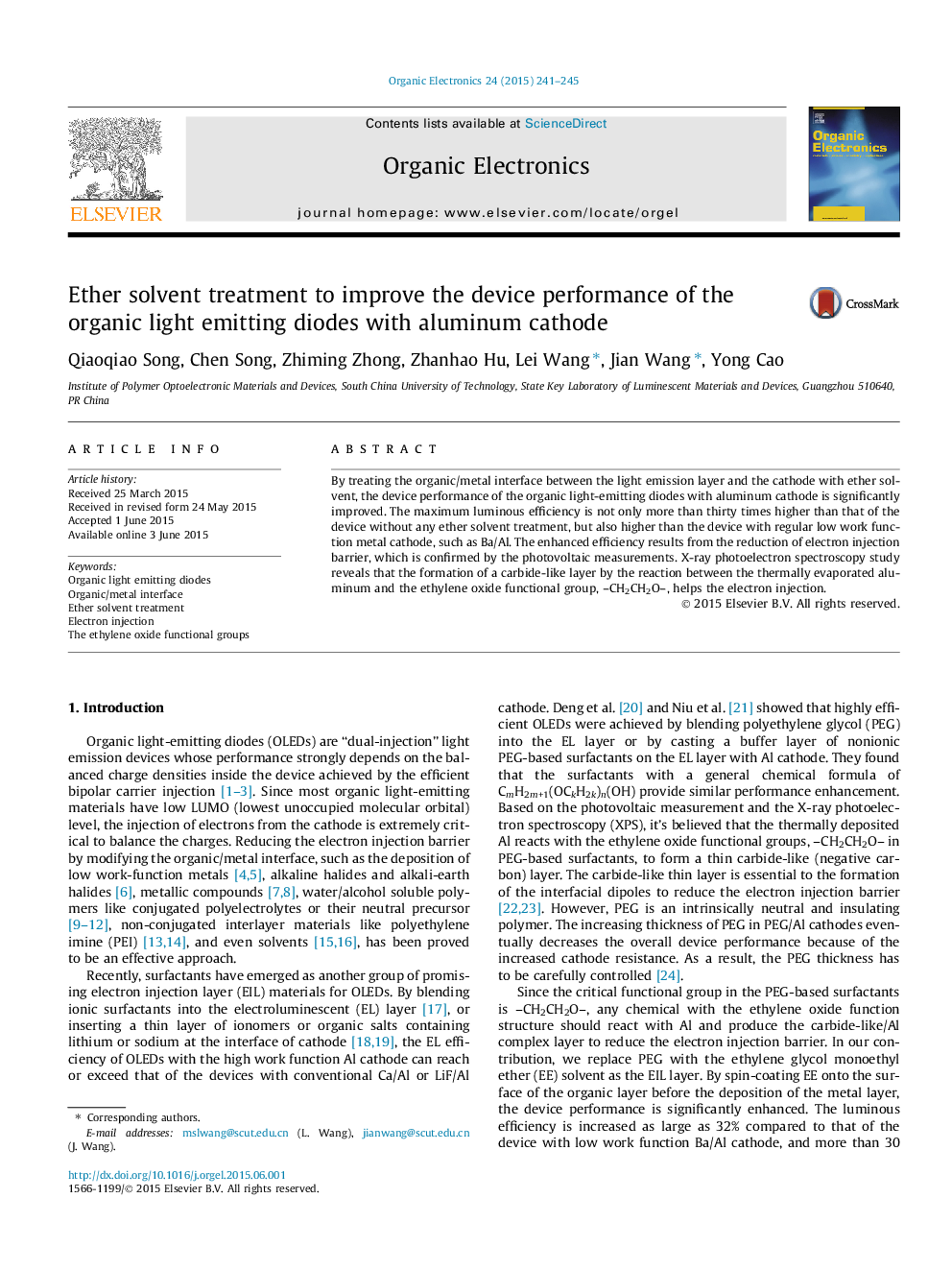| Article ID | Journal | Published Year | Pages | File Type |
|---|---|---|---|---|
| 1263704 | Organic Electronics | 2015 | 5 Pages |
•Treating the organic/metal interface with the ether solvent improves the luminance efficiency more than thirty times higher.•The photovoltaic measurements confirm the enhanced efficiency results from the reduction of electron injection barrier.•X-ray photoelectron spectroscopy study reveals that the formation of a carbide-like layer helps the electron injection.•The ethylene oxide functional groups, –CH2CH2O–, reacts with aluminum to form the carbide-like layer.
By treating the organic/metal interface between the light emission layer and the cathode with ether solvent, the device performance of the organic light-emitting diodes with aluminum cathode is significantly improved. The maximum luminous efficiency is not only more than thirty times higher than that of the device without any ether solvent treatment, but also higher than the device with regular low work function metal cathode, such as Ba/Al. The enhanced efficiency results from the reduction of electron injection barrier, which is confirmed by the photovoltaic measurements. X-ray photoelectron spectroscopy study reveals that the formation of a carbide-like layer by the reaction between the thermally evaporated aluminum and the ethylene oxide functional group, –CH2CH2O–, helps the electron injection.
Graphical abstractFigure optionsDownload full-size imageDownload as PowerPoint slide
